
Define corporate banking customer segments and value propositions
Over a three-month engagement, serving as the Strategic Designer, I led the end-to-end service-design process: planning, customer research, concept testing, and workshop facilitation. Deliverables included:
The project’s goal was to segment MSB’s corporate customer base, build deep empathy with each group, select priority segments, and propose targeted solutions to drive adoption and revenue growth.
MSB bank, founded in 1991, is Vietnam’s first joint-stock commercial bank and one of the country’s top ten lenders. Today it serves over 3.1 million retail and 64,300 corporate customers through a network of 274 branches, transaction offices and 300 ATMs nationwide.
The MOA (Main-Operating-Account) project was launched to rethink MSB’s corporate account strategy. Its goal: increase Total Operating Income (TOI) by growing the number of business clients and making MSB the primary banking partner for SMEs.
To ground our segmentation in data, I synthesized cross-departmental input (sales, marketing, operations) to provide the Data Scientist-An with qualitative customer insights for identifying patterns in sales strategy and customer segmentation. Our team aligned on four meaningful dimensions: financial characteristics, business scale, credit relationship, and demographics and then use K-means analysis to identify 5 different corporate segments.

I designed primary research to deepen insights into the five segments and guided the Business Analyst, Linh, in note-taking and customer interviews to support the process.

I consolidated all findings into a unified customer-profile document, followed by thematic analysis to surface overarching needs and pain points
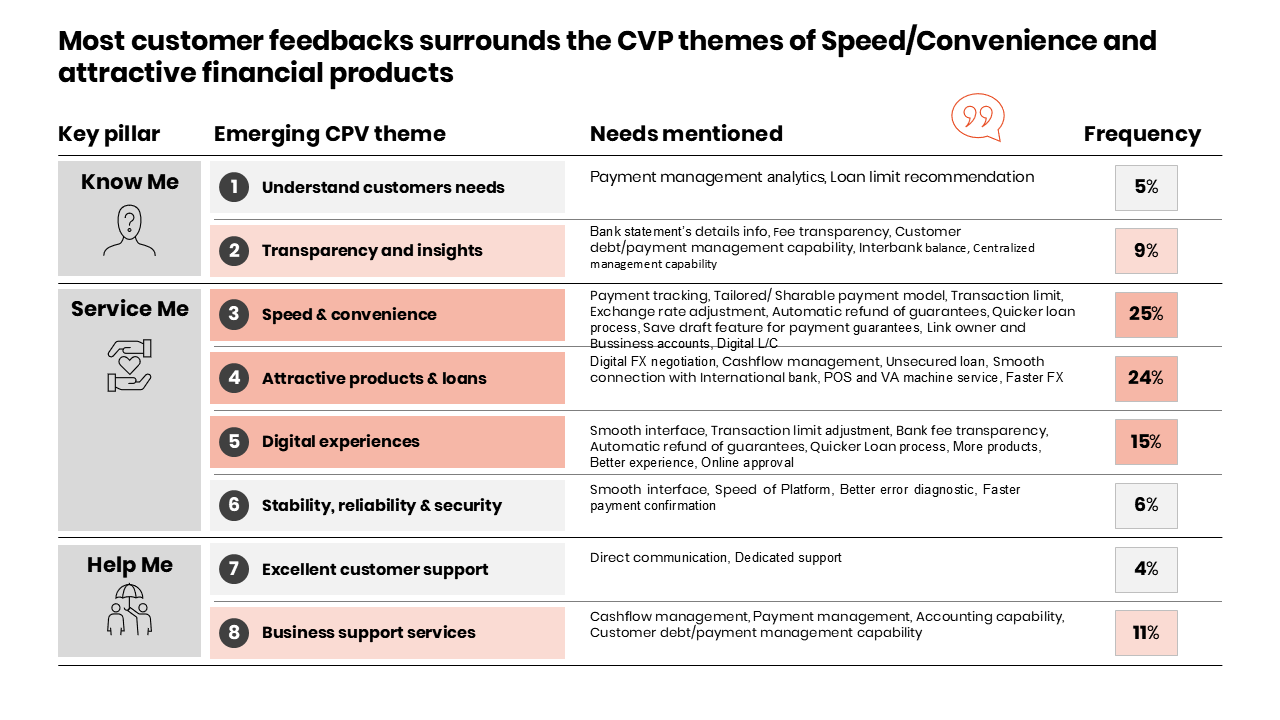
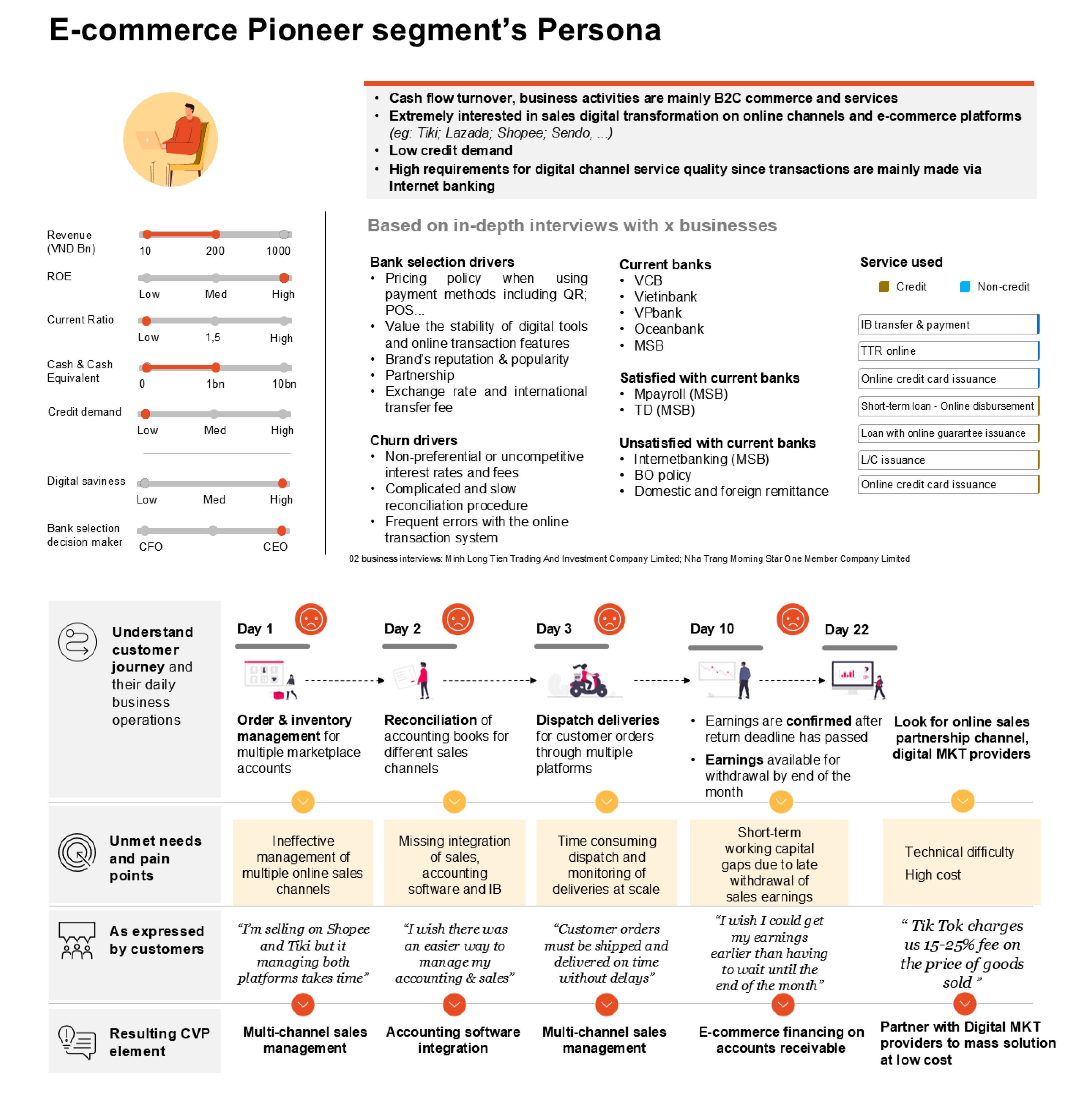
With research insights in hand, I convened four cross-functional teams—each responsible for one customer segment—to deepen empathy and generate ideas. Before I conducted the workshop series, I prepared these following materials:

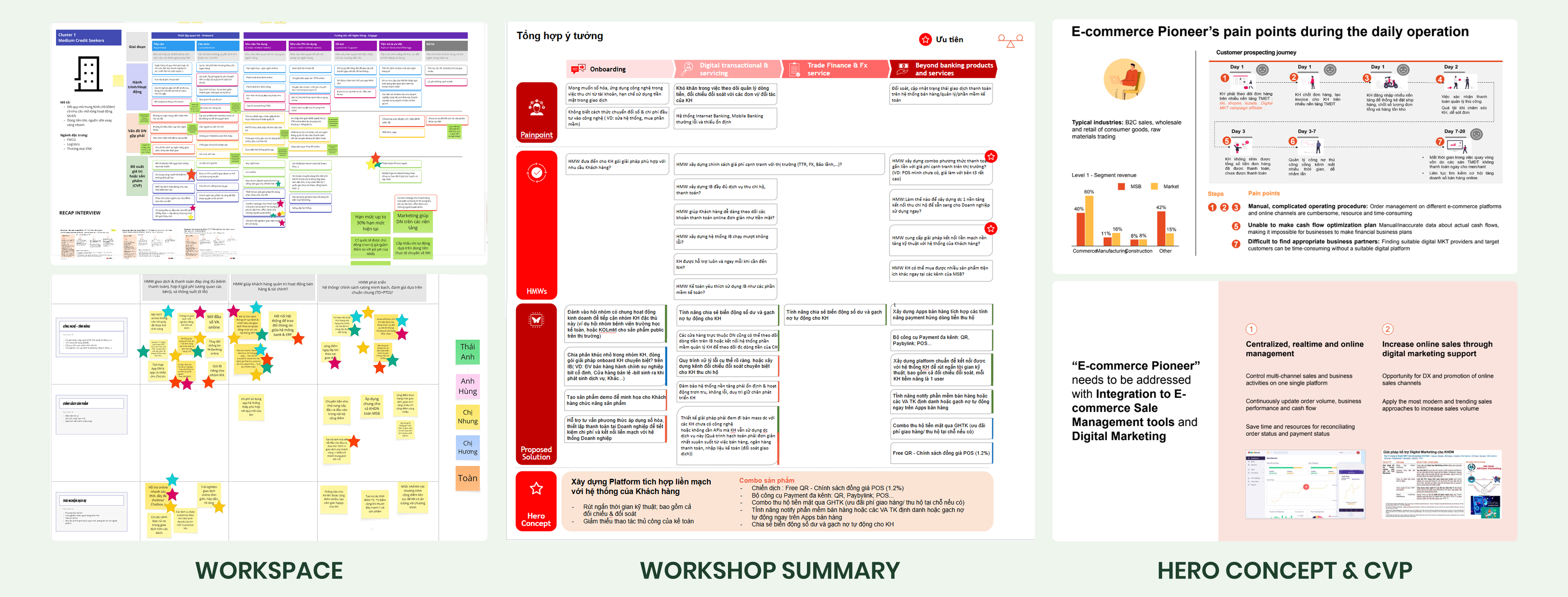
After the workshops, we select the created hero concepts, break it down into 8 customer value popositions. I then collect and synthesized hypothesis and identify suitable approach to test the hypotheses (as shown in picture)
I also trained our BA on Miro tool and service design principles, so they could support me in creating and enriching sub-journeys/process mapping while I focused on core design decisions.
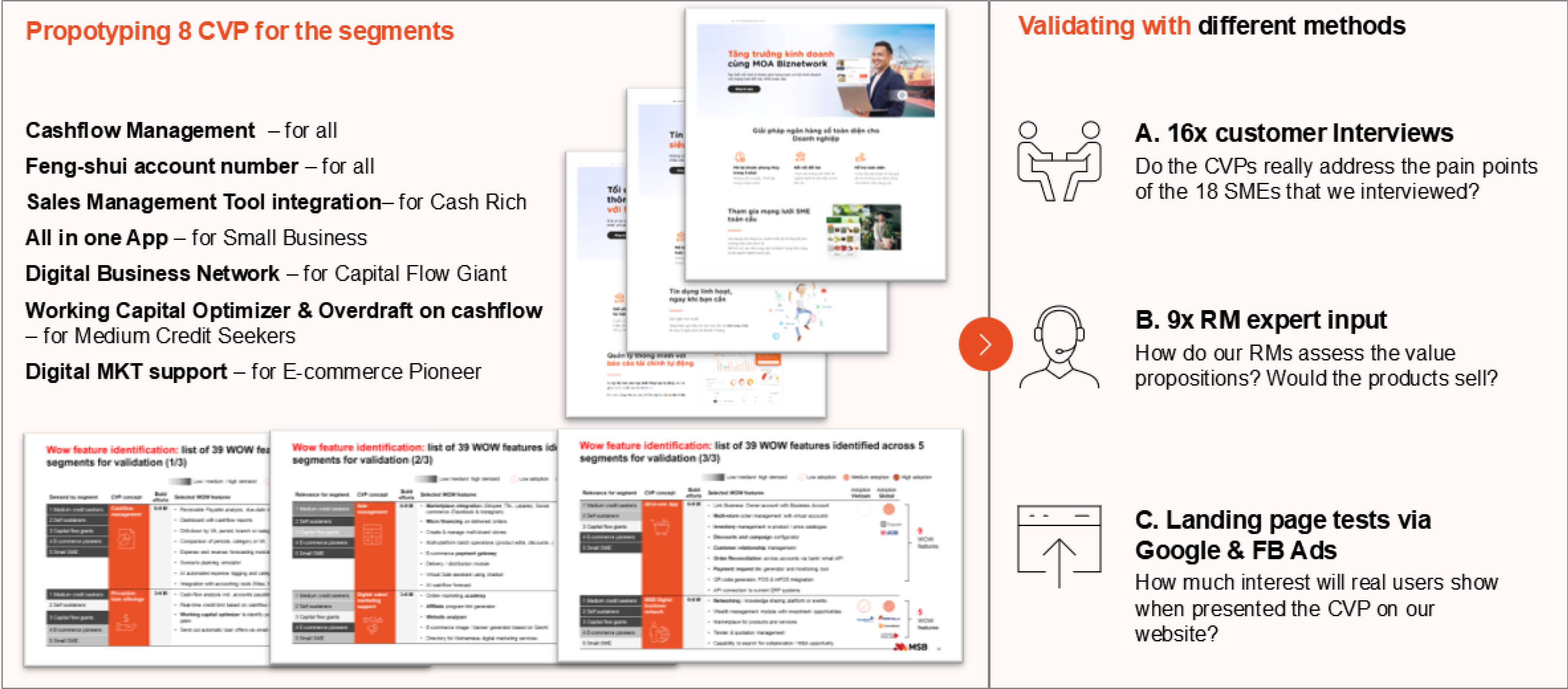


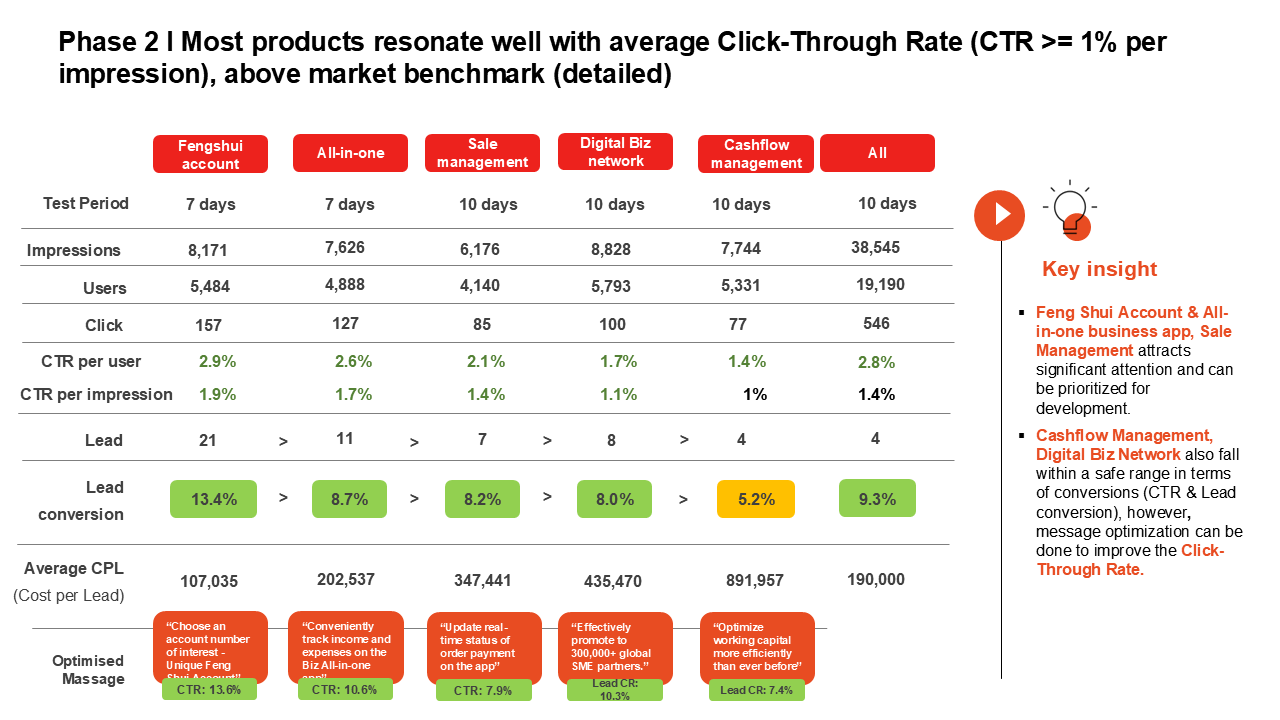
By phase end, I triangulated all the data and synthesized them into prioritization order. The result was later used as Desirability factor in D-V-F prioritization framework (together with Viability and Feasibility). Based on this data, decision makers knew which product concepts had the most potential.
